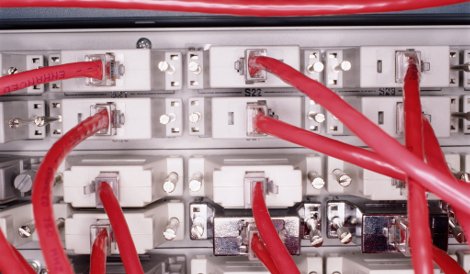As we've seen plenty in the past, Intel Corp. has a strong propensity for inserting itself firmly into the conversation every time a major technological trend develops, regardless of how relevant processors are to that conversation. To be sure, they are, by design, always relevant. It's the degree of relevance that varies.
A recent example Focus readers are most likely to recall was when the chip maker started aggressively staking out a spot in Data Center Infrastructure Management (DCIM) – a space that has been very hot over the past couple of years. Intel pursued and successfully closed a number of deals with influential DCIM vendors to integrate their software with its Data Center Manager middleware.
Having its product inside the majority of the world's computers puts the company in a unique position of being able to get involved, deeply, in pretty much any large-scale technological trend that occurs. Latest in the series is its active pursuit of a big role in the indisputably hot Software Defined Networking (SDN) space.
Why SDN matters to Intel
“A lot of people ask, 'Why does Intel even care about SDN?'” Rose Schooler, VP of Intel Architecture Group and general manager of the company's Communications and Storage Infrastructure Group, says. The answer is simple: SDN is a huge market opportunity, and Intel wants a piece of the action.
Some percentage of the networking space (which, considered in a broad sense, includes cloud, enterprise networks, wireline, wireless and cable networks) will adopt some kind of SDN capability in the near future. “We have, on the compute side of the equation, like, early-double-digits market-segment share (10-11%),” she says. SDN is “an initiative and an opportunity for us to grow our share in networking, which is very low right now.”
Intel considers the CPU portion of networking to be a multi-billion-dollar growth opportunity by itself. It also sees an opportunity to sell switches into this space – a capability it gained in 2011 with the acquisition of Fulcrum, a fabless network silicon vendor.
Another past acquisition gave it the opportunity to capitalize on the software portion of the networking equation. Just this week, Wind River, a subsidiary acquired in 2009, launched the Open Network Software solution, a software environment for building out software-defined networks and infrastructure.
Blueprints for the future
The role Intel is staking out for itself in the SDN world extends beyond the one that gives it the immediate benefit of selling software and silicon, however. The picture Schooler paints is one of Intel as an enabler of SDN through technology and standard-making.
On the technological side, the company is interested in optimizing its platform for as many SDN-related applications as necessary. “If there's a workload we need to optimize on IA (Intel Architecture), we'll look at instruction changes, micro-architecture changes, CPU chip-set changes, whatever we need to do to make our platform more [relevant] to that domain,” she says. The company also plans to work with traditional players in the network supply chain to encourage an open ecosystem and make sure their SDN solutions can be optimized on IA.
Just like it has done with servers, Intel is creating reference designs for SDN equipment with Intel CPUs and chip sets. The first product of this effort was the Seacliff Trail reference design for a top-of-rack SDN-enabled switch. In addition to Intel CPU and chip set, the design includes Fulcrum's Alta switch and Wind River software. “That doesn't mean that we won't disaggregate it and sell it as parts, but we wanted to create an example design of what an open platform using open standards would look like,” Schooler says.
Go open or go home
Open standards are a crucial part of these efforts. “I think everyone realizes that SDN is here to stay, so everyone is putting their cards on the table to enable SDN for their business model and their configuration. So you see some traditional networking vendors leading some of the standards bodies around things like Open Daylight, because they realize that virtual solutions, as well as hardware-optimized solutions are going to coexist.”
Open standards Intel is looking at include Open vSwitch, OpenFlow and OpenStack. It is involved in organizations focused on standards and has also created an organization of its own. This week at Intel Developers Forum in San Francisco, the company launched Network Builders, an organization focused on bringing together an ecosystem for bringing solutions based on open standards to market. The organization will be creating blueprints for building these platforms quickly to accelerate the transition to an SDN-enabled world.

